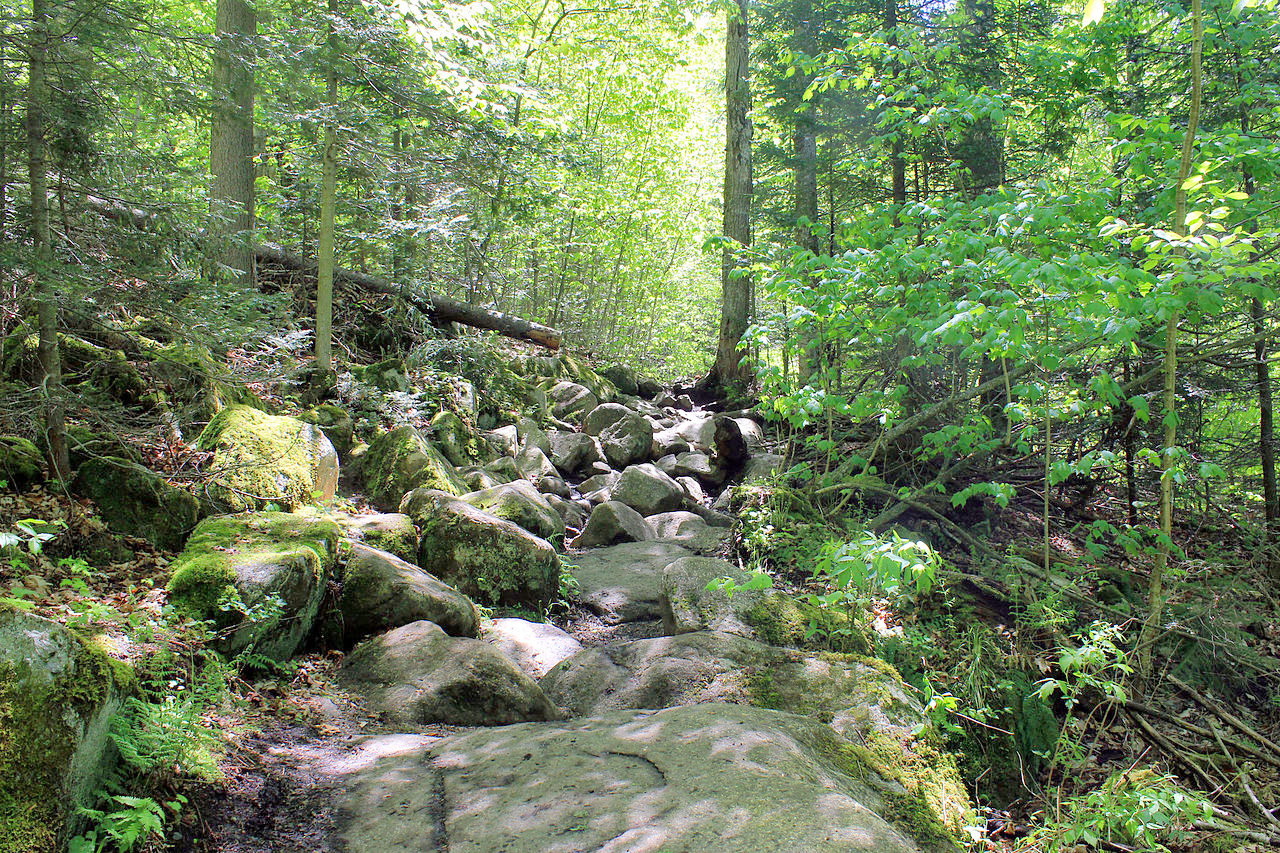The Geography of
New York
Why visit New York?
Away from the city which makes the state famous, Upstate New York is home to amazing natural landscapes with mountains, rivers and valleys. Saratoga Springs is well known for its waterfalls and bubbling hot springs. The Finger Lakes have an abundance of beautiful lakes. The Adirondack and Catskill mountains offer a great wilderness. And don’t forget about the picturesque villages dotted throughout New York.
Contents
Map
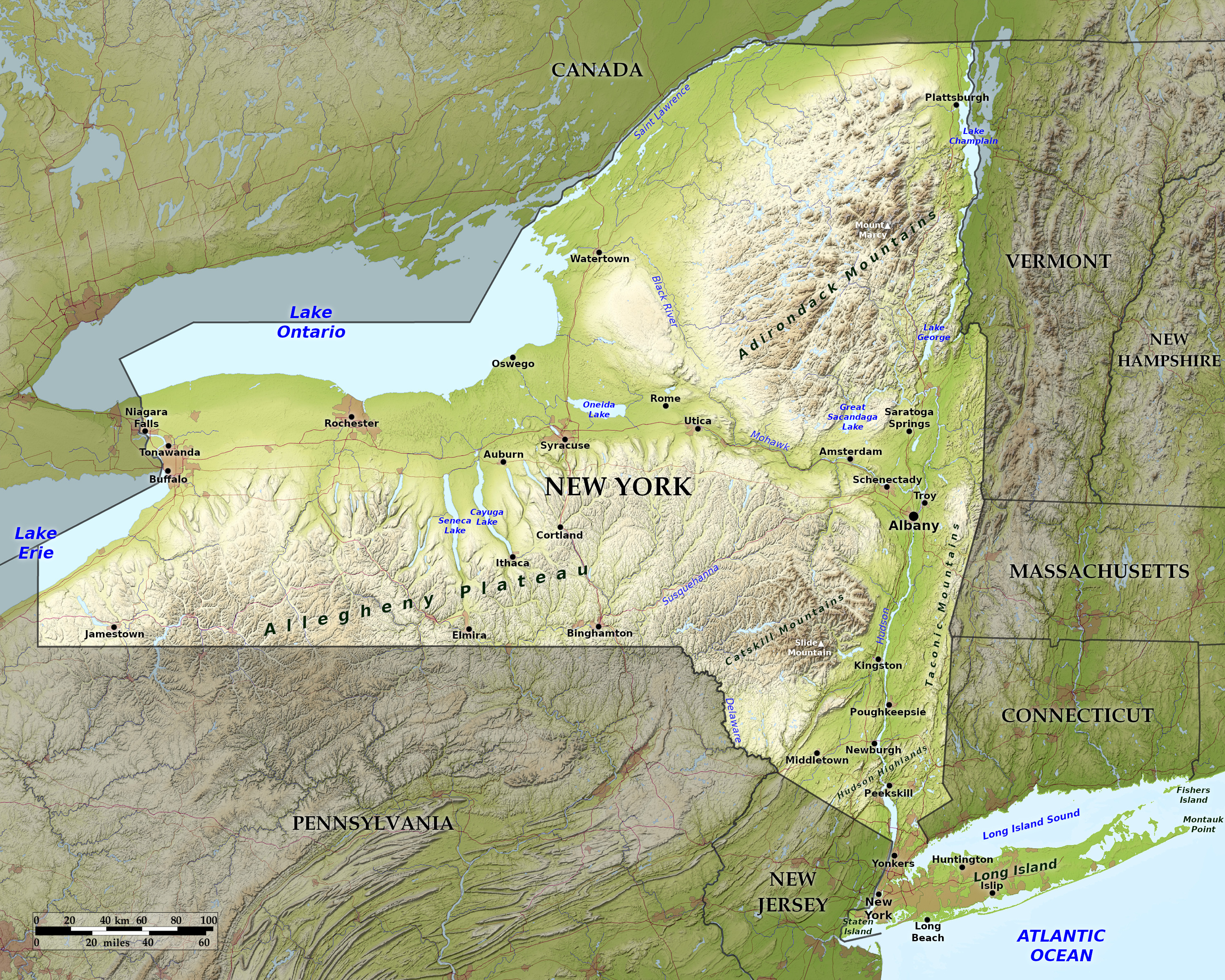 Relief map of New York
Relief map of New York
What is the landscape of New York like?
Adirondack Mountains
The most notable feature of New York State is the roughly circular mountain regin of the northeast known as the Adirondack Mountains. This is a very ancient mountain mass of crystalline rocks. The highest peak is Mount Marcy (5,343 ft / 1,629 m), and it is grouped with several other peaks with a height from 4,000 to 5,000 feet (1,200–1,500 m). The higher peaks have worn, rounded summits, and are for the most part forest covered. It is a sparsely settled region, but the varied and beautiful scenery, with forests, rivers and lakes, makes this is a popular summer resort.
Allegheny Plateau
In the south rises the high Allegheny Plateau which extends to the Pennsylvania border. This plateau, more than half the State, varies greatly from place to place—its height decreases toward the north by a series of steps, reaching its lowest points on the plains which skirt the southern shores of Lake Ontario and Lake Erie. Elsewhere the land is higher and far more rugged. Heights of between 1,500 and 2,000 feet (450–600 m) are common in this region all the way to the Catskill Mountains in the east. Valleys are deeply sunk into the plateau, occasionally broad enough to give rise to strips of fertile farmland. There are also scores of beautiful glens here, and hundreds of waterfalls. These include Ithaca Falls in the city of Ithaca, and the Taughannock falls, a few miles north of Ithaca, and the highest waterfall in the State.
Catskill Mountains
In southeast New York, where the Appalachians enter the State, the plateau becomes much higher, reaching its culmination in the Catskill Mountains. Here summit heights of from 3,000 to 4,000 feet (900–1,200 m) are common, the highest point being Slide Mountain (4,180 feet / 1,270 m). Like the Adirondacks, this region is largely forest covered, and is a favourite summer resort; but it is rather less a wilderness than the Adirondacks, and in places is cleared for farming. South and southeast of the Catskills, come the low folds of the Great Valley of the Appalachians, which extends north into Vermont.
Lowlands
The Hudson River is the most important river in the State; in its lower reaches it is essentially a fjord. It is noted for its remarkable scenery, especially where it crosses the Highlands. The greater part of the sea coast of New York is on Long Island—this is a low, sandy coast, the home of numerous summer resorts. This peninsula is a northeast extension of the coastal plains of New Jersey.
New York is noted for its many falls and rapids, some of them of great beauty. Of these the largest are the Niagara Falls in the far west. They are about 1 mile wide and 160 feet (50 m) high. They are divided into two sections: the American Falls are entirely within New York State; but the Canadian boundary-line passes down the centre of the Horseshoe or Canadian Falls.
What is the nature of New York like?
In the northern parts of New York State the trees include white pine, spruce, larch, hemlock and balsam, birch, maple, beech and basswood. The forests of the western half of the State contain pine, oak, chestnut, hickory, maple and beech. The tulip tree, walnut, butternut, poplar, sycamore and locust are also widely distributed.
On the summits of the Adirondack Mountains are some alpine plants, such as reindeer moss and other lichens. Flowering plants can be found everywhere throughout New York: cowslips, violets, anemones, buttercups and bloodroots in early spring, the white pond lily and the yellow pond lily in summer, asters and golden-rod in autumn, and besides these there are about 1,500 other flowering plants in the State and more than 50 species of ferns.
What is the climate of New York like?
The climate of New York is typically hot in summer, and cold in winter. The climate is very variable: the summer weather switches between spells dry cool air and days of great heat and humidity, whereas winter has spells of dry cold air and periods of warmer weather with rain and snow. In the Adirondack Mountains the snowfall is heavy, the winter long and severe. The temperature of the inland valleys is notably higher than that of the uplands. In coastal New York, the influence of the sea softens the rigours of winter, and tempers the heat of summer.
| Climate data for Albany, New York (1991–2020) | |||||||||||||
|---|---|---|---|---|---|---|---|---|---|---|---|---|---|
| Month | Jan | Feb | Mar | Apr | May | Jun | Jul | Aug | Sep | Oct | Nov | Dec | Year |
| Average high °F (°C) | 32.8 (0.4) | 36.0 (2.2) | 45.3 (7.4) | 59.2 (15.1) | 71.2 (21.8) | 79.4 (26.3) | 83.9 (28.8) | 82.0 (27.8) | 74.4 (23.6) | 61.6 (16.4) | 49.3 (9.6) | 38.2 (3.4) | 59.4 (15.2) |
| Daily mean °F (°C) | 24.4 (−4.2) | 26.8 (−2.9) | 35.7 (2.1) | 48.1 (8.9) | 59.6 (15.3) | 68.4 (20.2) | 73.1 (22.8) | 71.4 (21.9) | 63.5 (17.5) | 51.4 (10.8) | 40.5 (4.7) | 30.4 (−0.9) | 49.4 (9.7) |
| Average low °F (°C) | 15.9 (−8.9) | 17.6 (−8.0) | 26.1 (−3.3) | 36.9 (2.7) | 48.1 (8.9) | 57.4 (14.1) | 62.4 (16.9) | 60.7 (15.9) | 52.6 (11.4) | 41.1 (5.1) | 31.6 (−0.2) | 22.7 (−5.2) | 39.4 (4.1) |
| Average precipitation inches (mm) | 2.60 (66) | 2.28 (58) | 3.09 (78) | 3.11 (79) | 3.41 (87) | 4.05 (103) | 4.55 (116) | 3.76 (96) | 3.73 (95) | 3.85 (98) | 2.99 (76) | 3.26 (83) | 40.68 (1,033) |
| Average snowfall inches (cm) | 15.6 (40) | 13.7 (35) | 12.0 (30) | 1.6 (4.1) | 0.1 (0.25) | 0.0 (0.0) | 0.0 (0.0) | 0.0 (0.0) | 0.0 (0.0) | 0.3 (0.76) | 2.6 (6.6) | 13.3 (34) | 59.2 (150) |
| Source: NOAA | |||||||||||||
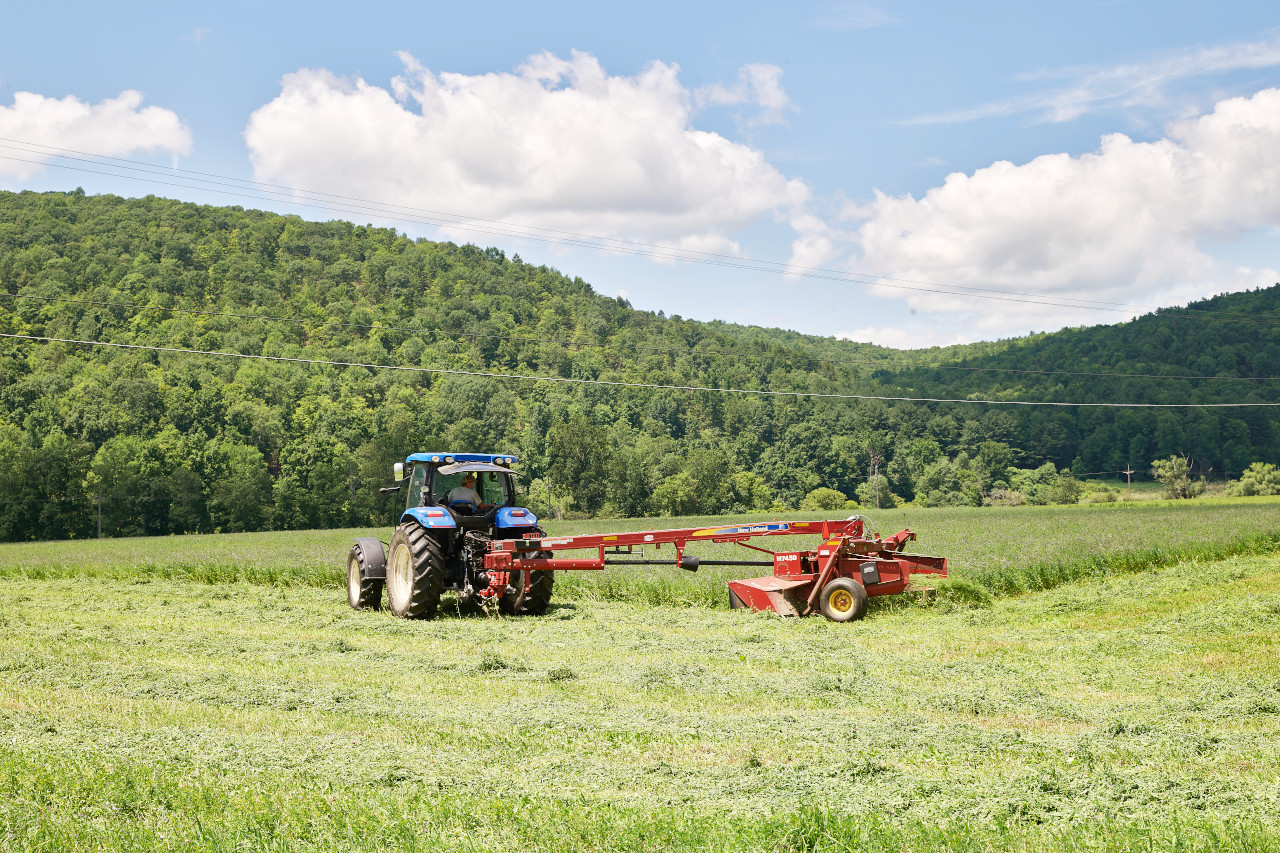 Tractor and grass cutter near Candor
Tractor and grass cutter near Candor
The official websites
New York
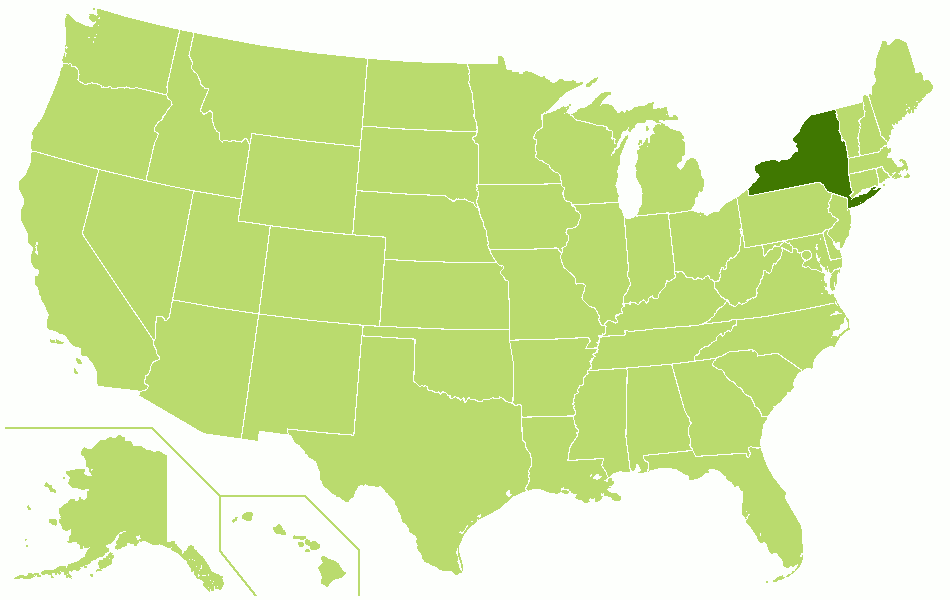
The Empire State
| Location: | Northeastern United States |
| Coordinates: | 43° 00′ N, 75° 30′ W |
| Size: | • 500 km N-S; 650 km E-W • 310 miles N-S; 400 miles E-W |
| Terrain: | Two large upland areas separated by lowland valleys |
| Climate: | Hot summers in the southeast; cooler in the uplands. Heavy winter snows inland. |
| Highest point: | Mount Marcy 1,629 m / 5,343 ft |
| Forest: | 63% (2016) (source) |
| Population: | 19,336,776 (2020) |
| Population density: | High (159/km²) |
| Capital: | Albany |
| Languages: | English (70%), Spanish (15%) |
| Human Development Index: | Very High (0.944) |
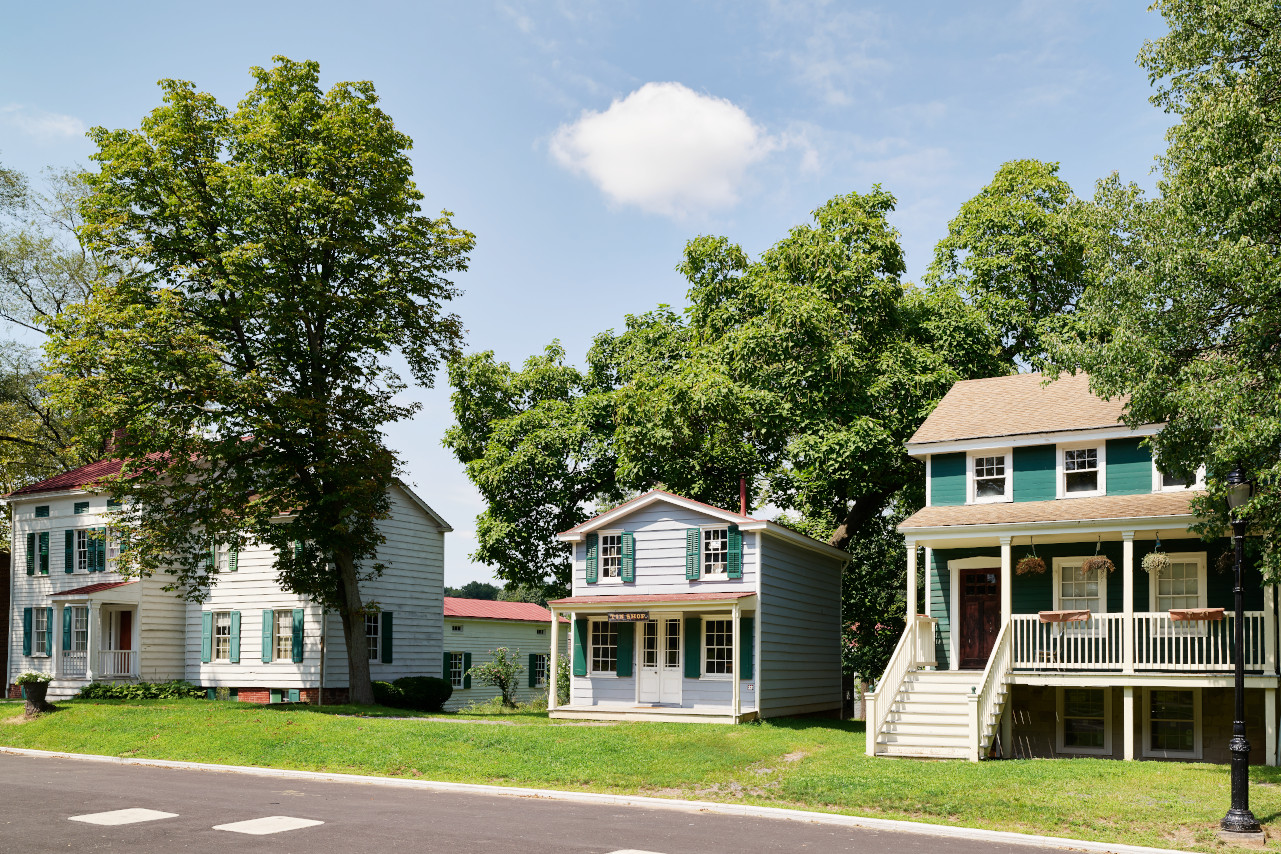
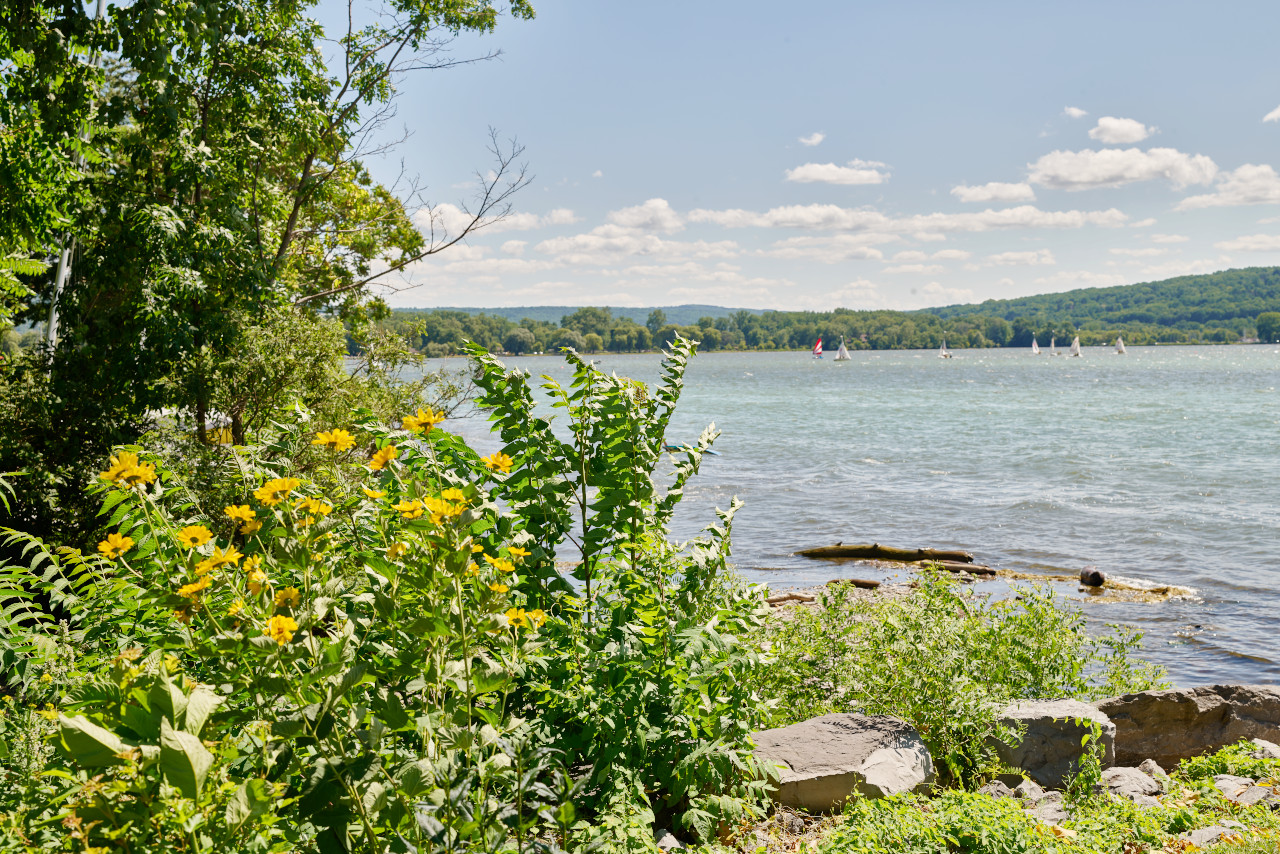
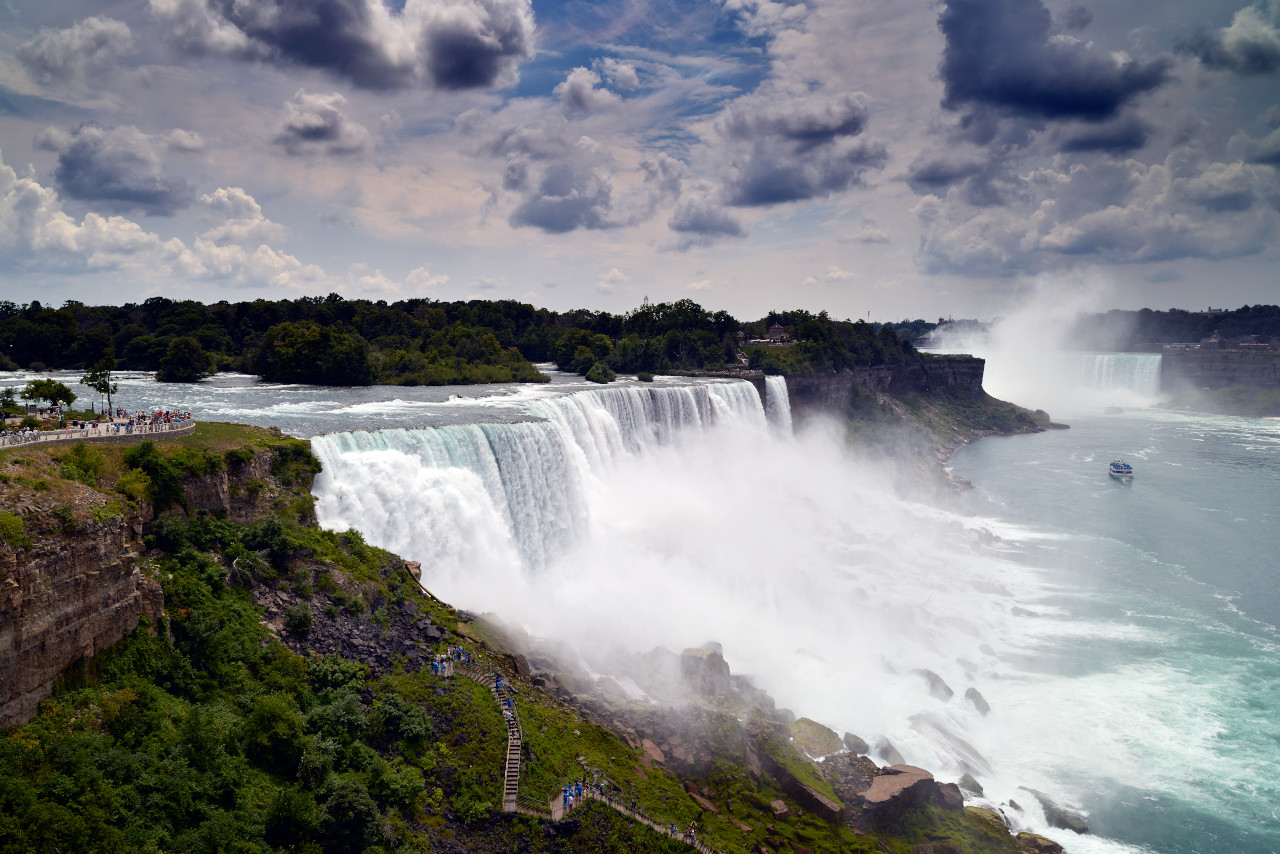
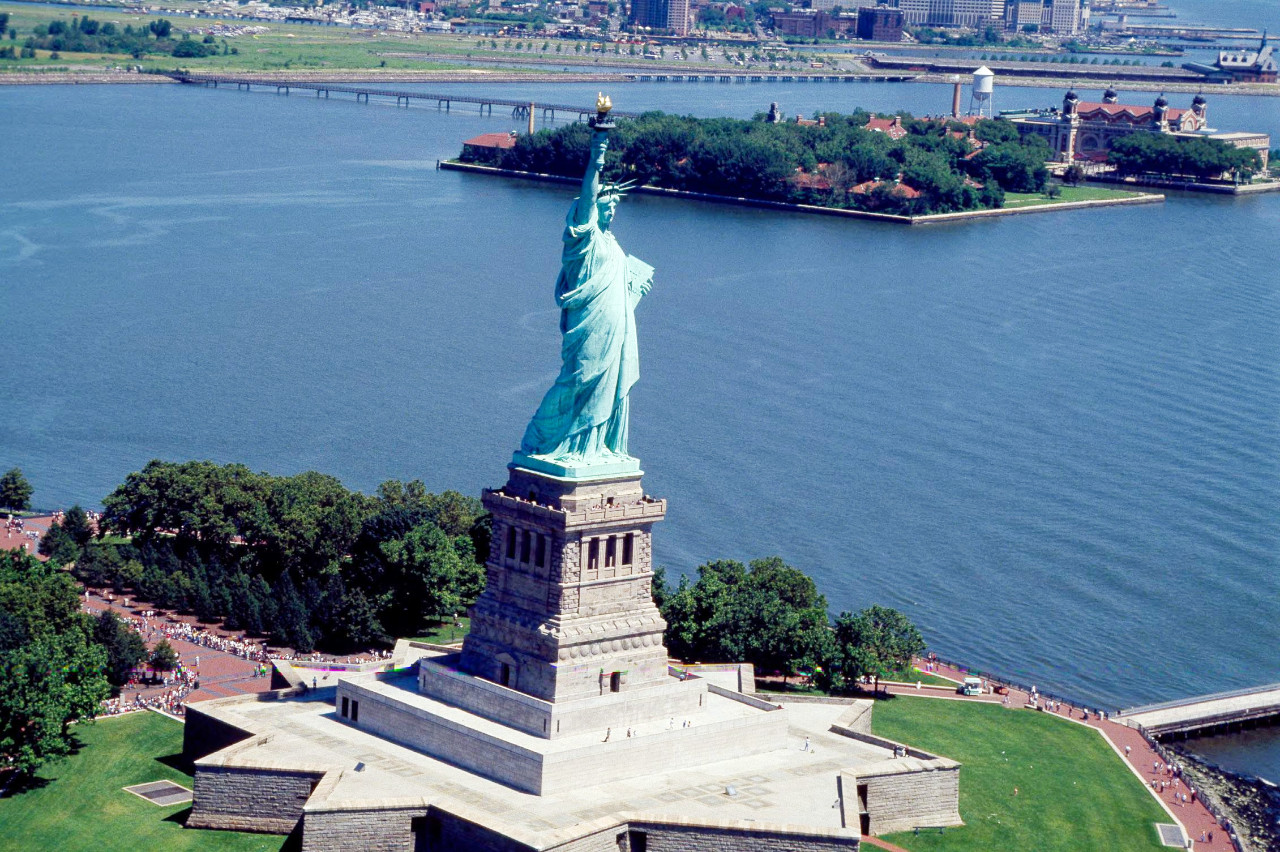
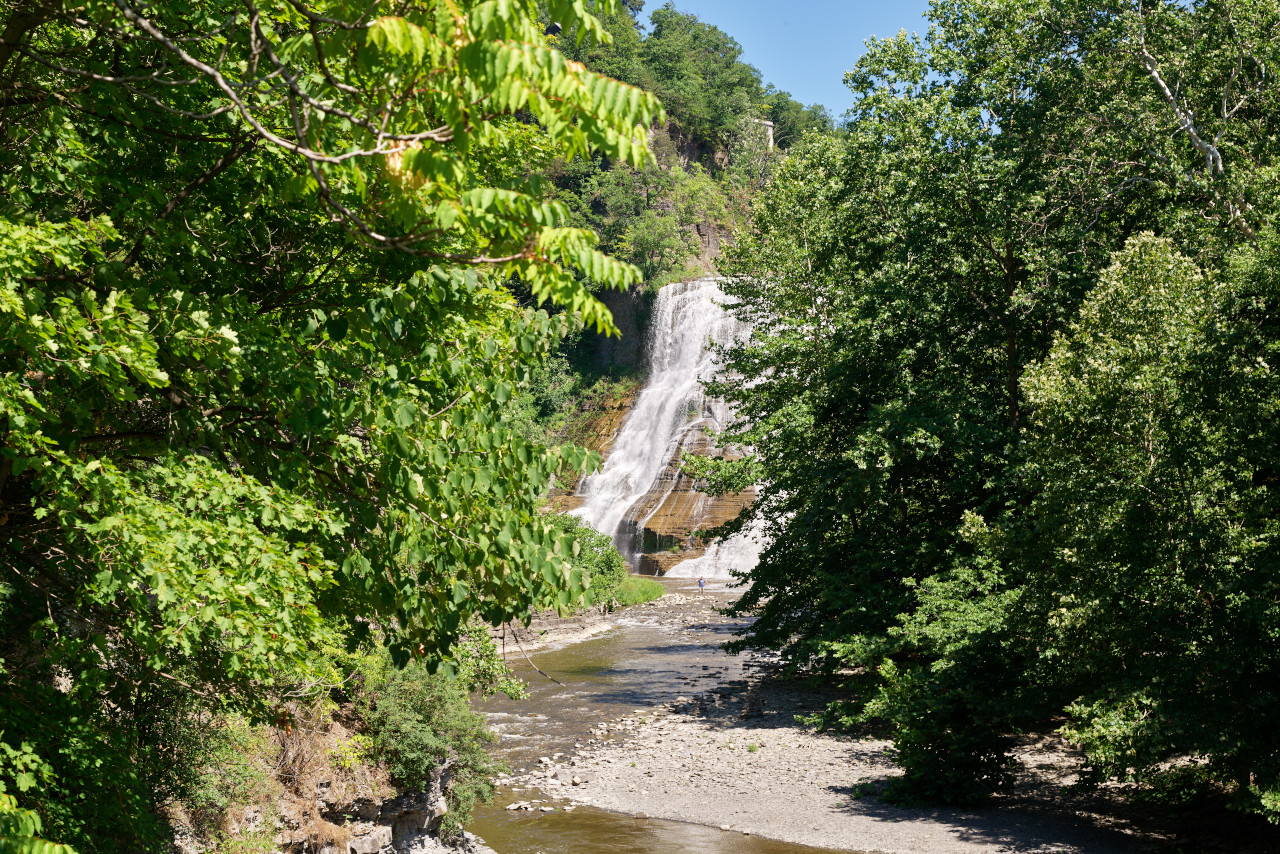
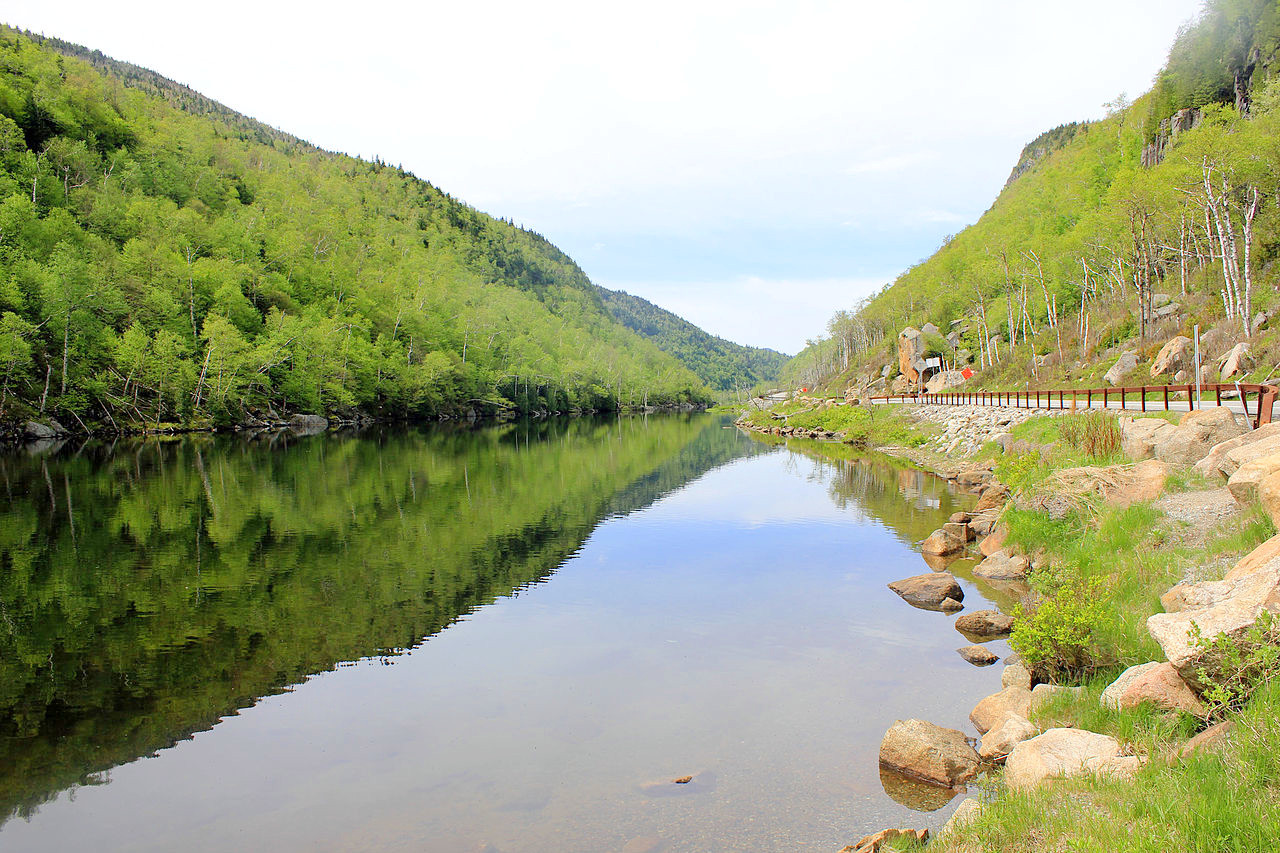
.jpg)
